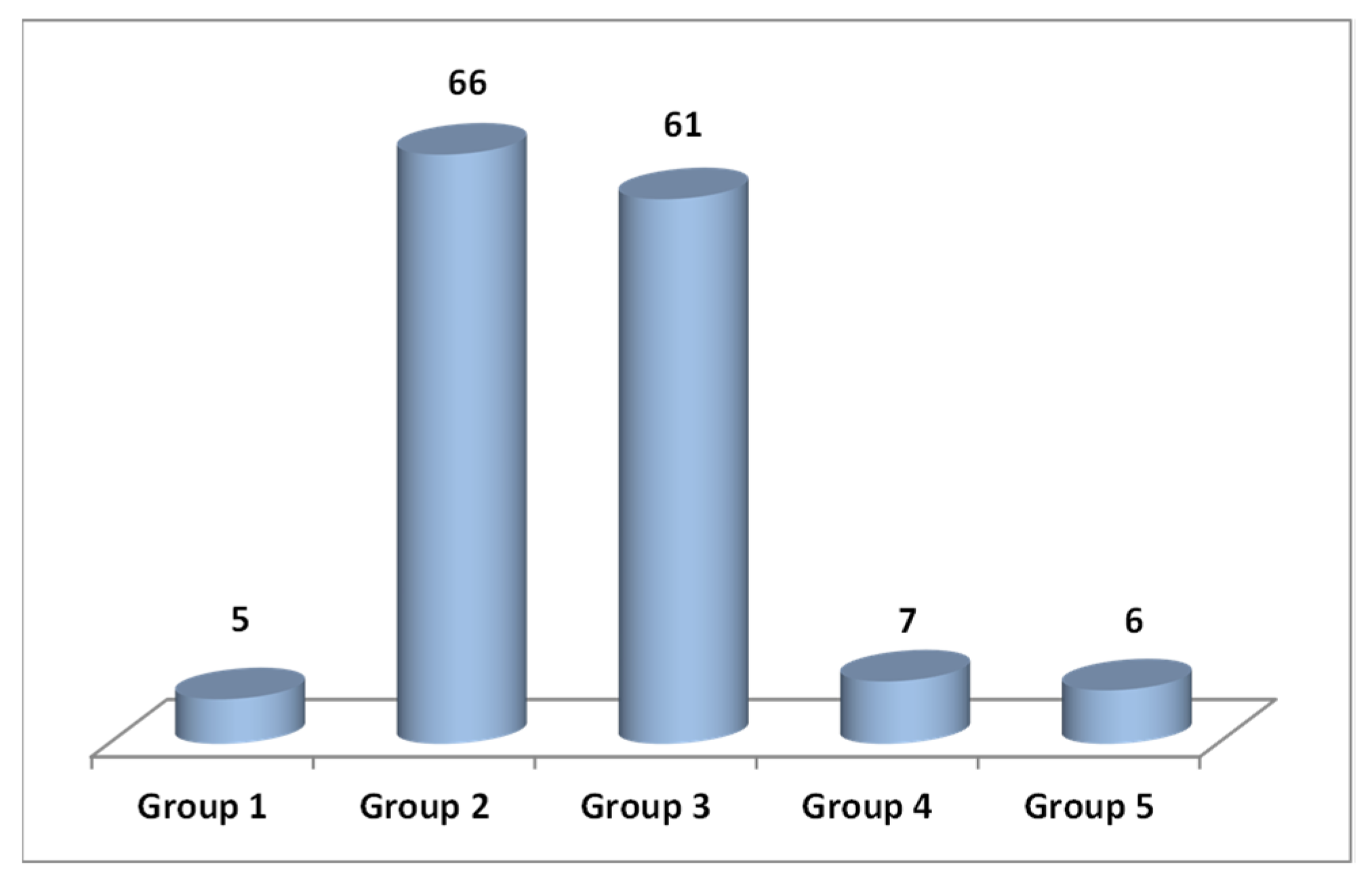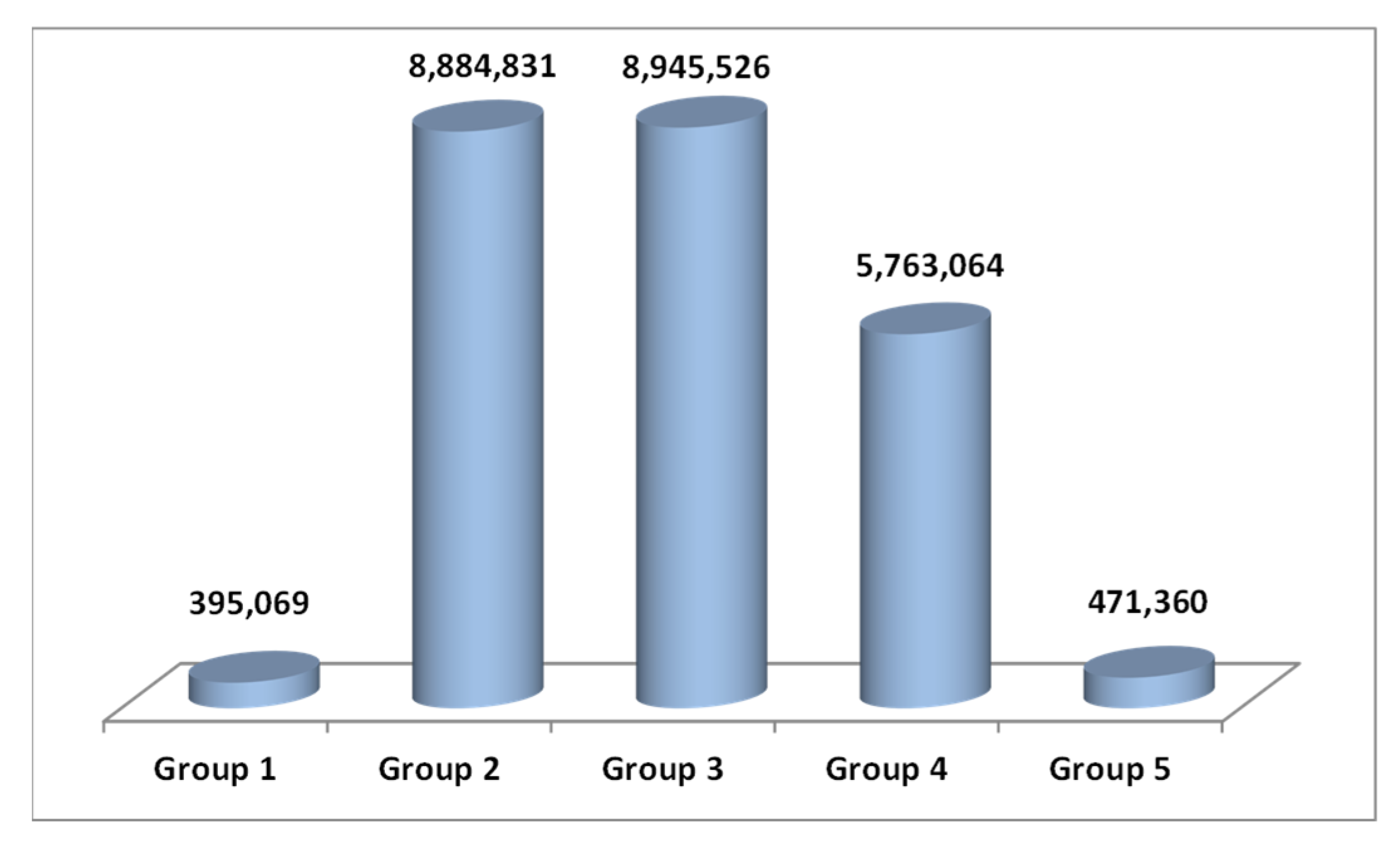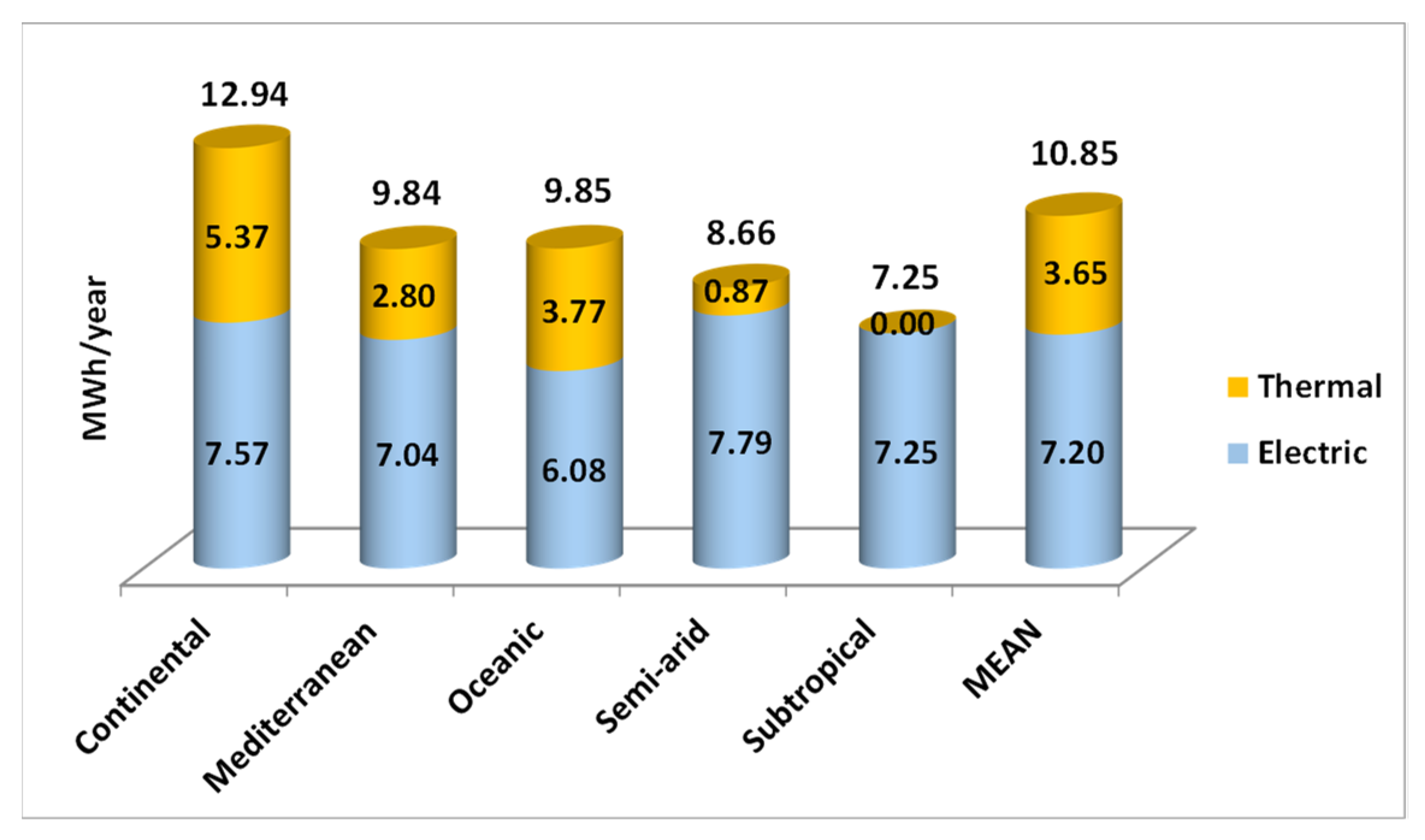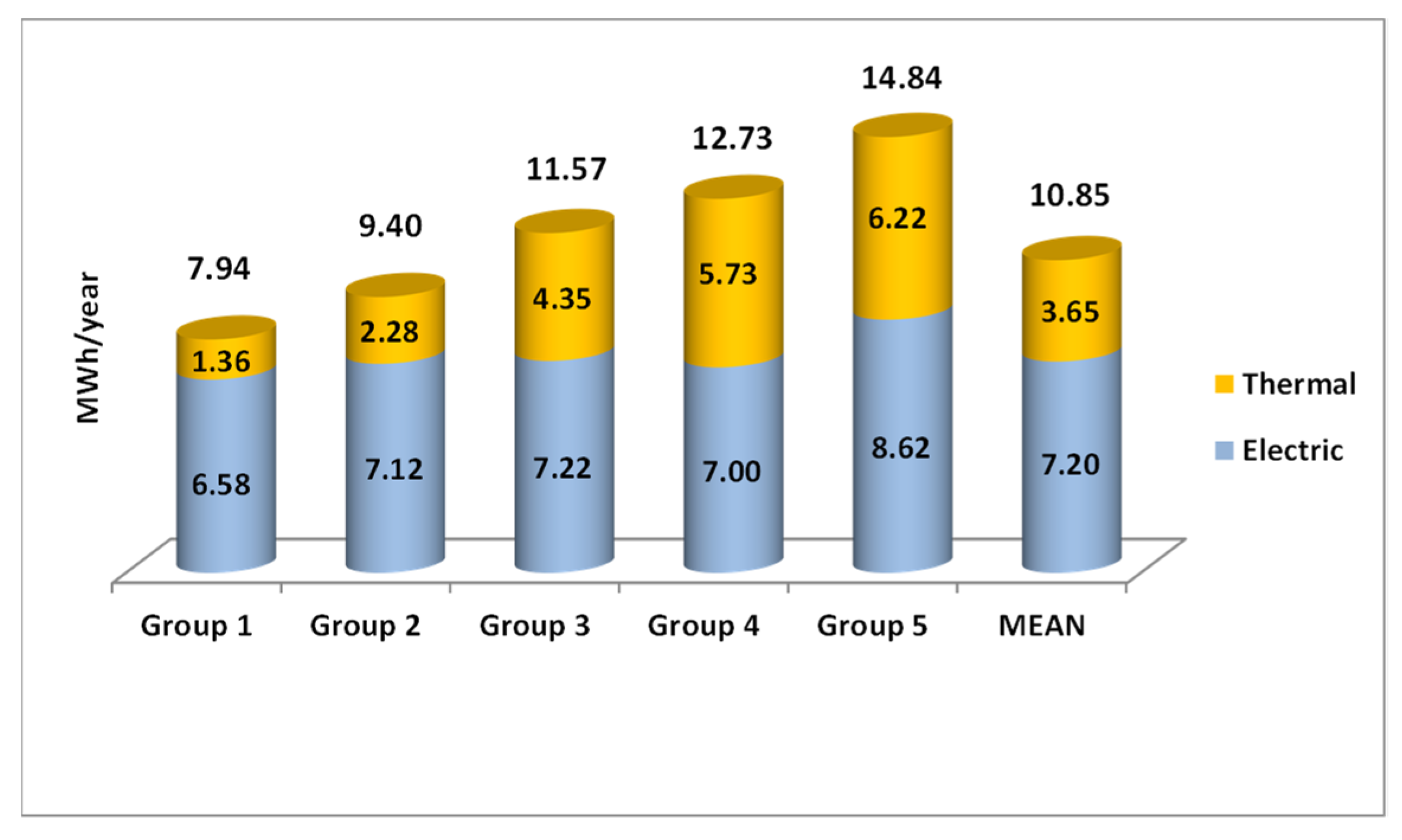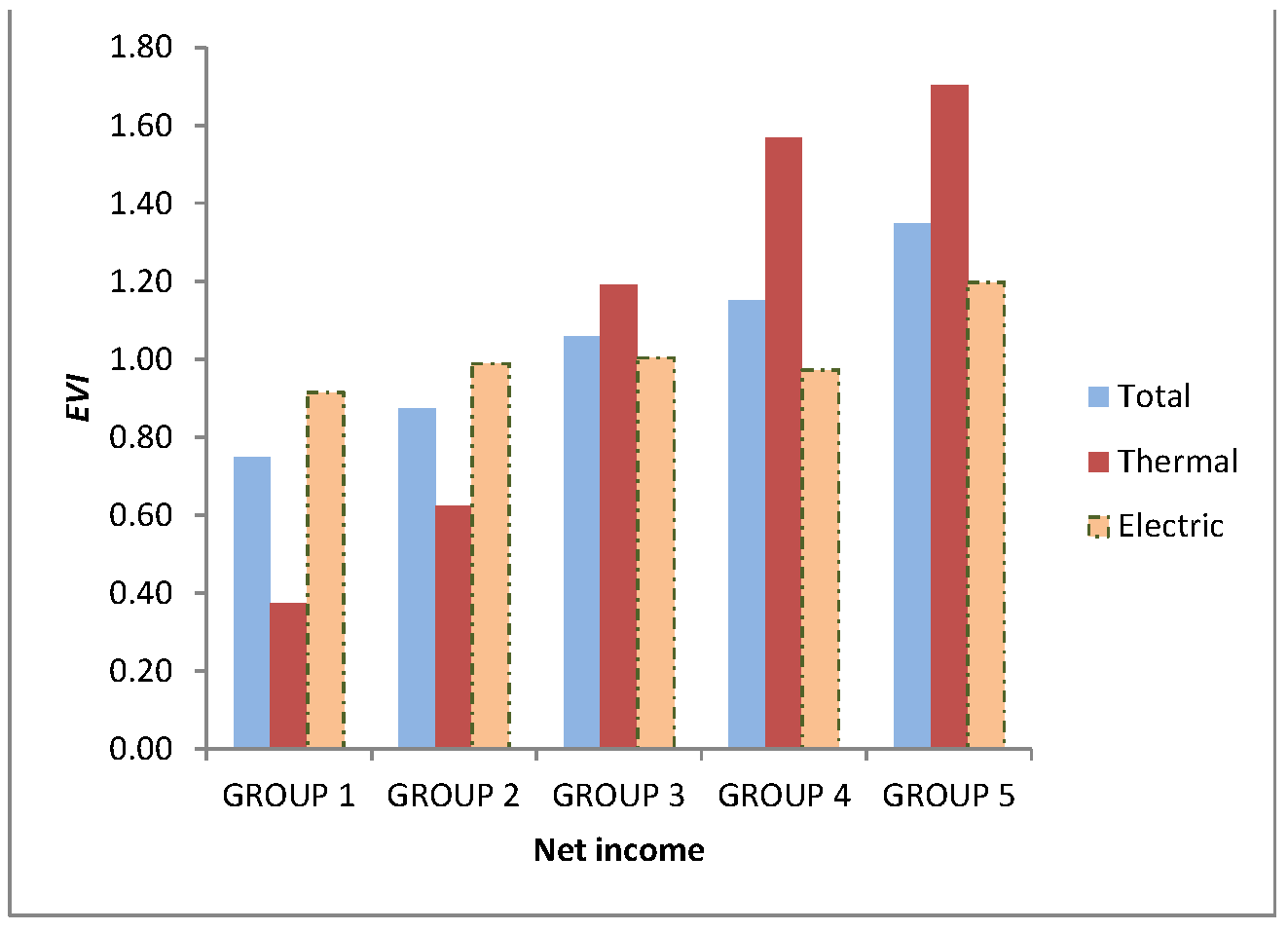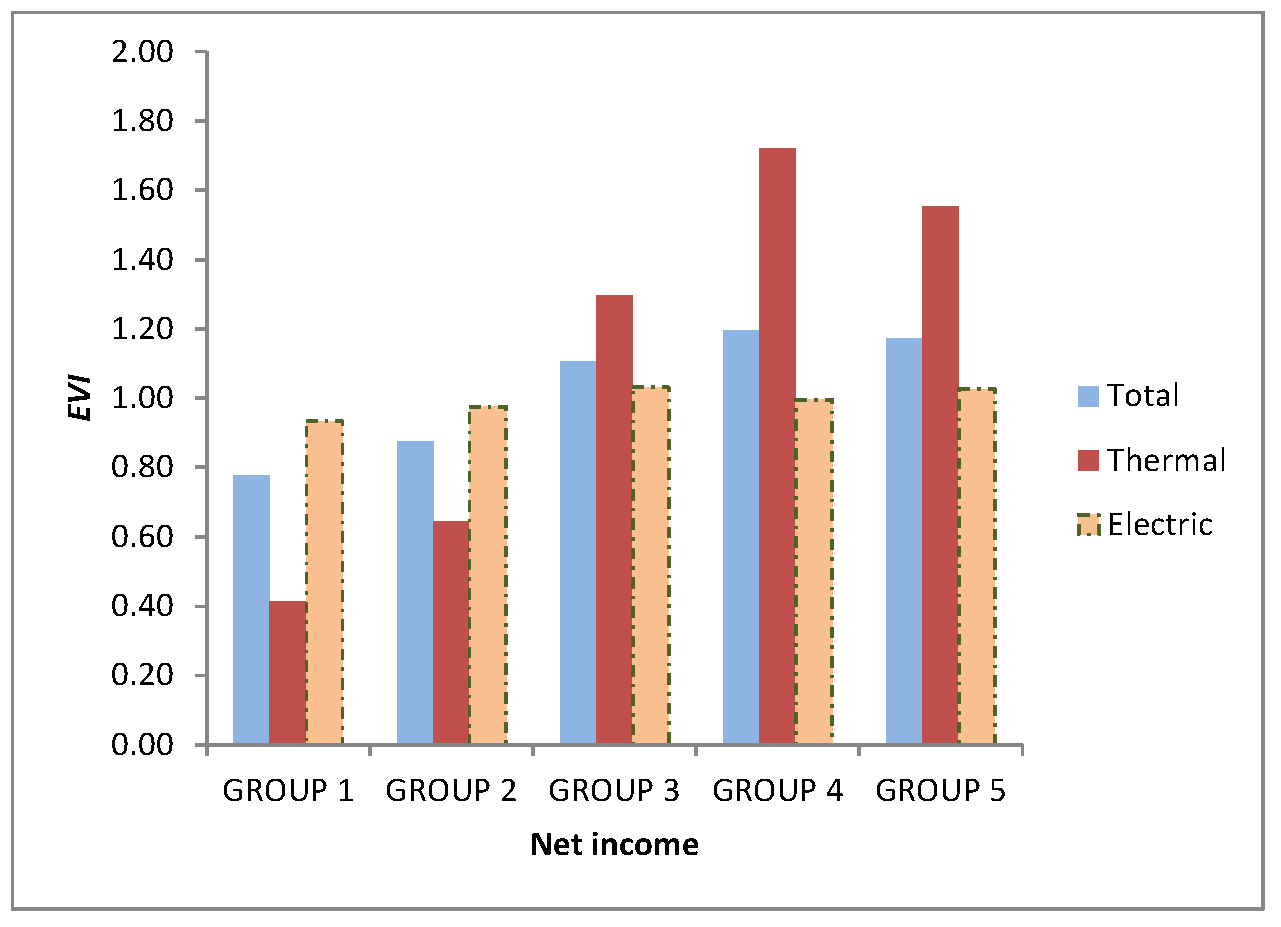1. Introduction
More than half of the world’s population lives in cities, and in some areas that number is even higher. This is the case of North America or Europe. In fact, the population in Europe’s cities is projected to rise to 84% by 2050 [
1]. Furthermore, more than 40% of greenhouse gas (GHG) emissions correspond to buildings in the residential and tertiary sectors [
2]. Hence, the importance that governments give to buildings and any measure taken on them will have an important multiplying effect. That importance is reflected in the United Nations’ Sustainable Development Goal 11. Among the objectives of this goal are the adoption of policies that mitigate climate change and reduce the environmental impact of cities. Other goals, such as 7 and 12, also refer to the use of renewable energy and sustainable and responsible consumption [
3].
On a more local level, in 2008, the European Union launched the Covenant of Mayors. Later, in 2015, it changed its name to Climate and Energy. Currently, mayors of 8000 cities from 53 countries around the world participate in it. Its objectives include increasing the resilience of cities to climate change, reducing CO
2 emissions, and ensuring access to sustainable and affordable energy for all [
4]. Among the main GHGs, CO
2 represents 80% of total emissions, making it the most worrying [
5].
The importance that knowledge of emissions has acquired is reflected in the increase in studies carried out in this area. The three main areas they have focused on are: locomotion, both in the emissions produced by vehicles [
6,
7] and those avoided by introducing the electric vehicle [
8]; industry [
9]; and houses [
10]. Policy guidelines have even been given for reducing emissions [
11].
CO
2 emissions in buildings come from energy consumption. In them, the usual energy consumption is electrical and thermal (in the form of natural gas in developed countries) [
12]. Therefore, by analyzing energy consumption, CO
2 emissions can be calculated. The works that studied these emissions have analyzed the relationship between different variables. One of the variables that most studies use is gross domestic product (GDP). This is one of the variables that most influences emissions [
13]. The relationship between GDP, energy and emissions has been studied for some countries [
14,
15], reaching the conclusion that there is a bidirectional relationship between them. In addition to GDP, population is another variable that is usually analyzed due to its influence, although it is normally studied with energy consumption, the latter being the one that it most influences [
16].
Considering that it is people who live in the houses, it is more appropriate to analyze their income instead of GDP. Thus, other works have studied, in certain countries, the influence that income has on emissions in general [
17,
18,
19] or on household emissions in certain countries—Ireland [
20], France and the USA [
21], China [
22,
23], or a panel of 170 countries [
24]—concluding that the higher the income, the higher the emissions. But, in any case, the existing studies have not descended to the city level. Only in [
25] has a comparison of emissions been made in 10 cities based on technical and geophysical factors.
Additionally, another variable that studies agree has a marked influence is climate. It is a factor that influences energy consumption and, therefore, emissions [
26,
27]. Therefore, to analyze only the influence of income, it is necessary to eliminate it.
Therefore, there is a growing interest in knowing the CO2 emissions that are produced. In addition, cities are where the highest emissions are produced, and within them a very important source of production is their buildings, both in the residential and tertiary sectors. However, the work carried out has not gone down to that level of detail. They have limited themselves to analyzing the influence that different variables have on emissions or, those who have studied a specific geographic environment, have reached the country level. Therefore, the objective of this work was to present a methodology to study the emissions that occur in city buildings based on the income of their inhabitants. Furthermore, to avoid the influence that climate can have on this analysis, this influence has been eliminated. Finally, and as an application of the proposed methodology, the particular case of Spanish cities with more than 50,000 inhabitants has been analyzed. In this way, utilities will have knowledge of the cities in which, depending on the income of their inhabitants, it would be necessary to invest in renewable energy infrastructures to reduce emissions; and governments will enact laws that favor energy savings and emission reductions. Finally, all the information used in the study was obtained from databases of public organizations.
The rest of the article is organized as follows:
Section 2 describes the proposed methodology that will be applied to the study area;
Section 3 shows the practical application to the case of Spain;
Section 4 shows the results and proceeds with its discussions; finally,
Section 5 presents the conclusions.
2. Materials and Methods
The methodology used was based on those that create synthetic populations [
28] and other classical ones that continue to be used [
29,
30,
31].
In developing the methodology, the following considerations were taken into account: only data published by official organizations or companies will be used; in the buildings of a city, thermal energy (in the form of natural gas) and electricity are basically consumed; as waste, CO2 emissions are emitted that can be calculated from these consumptions; the buildings considered are those corresponding to the residential and tertiary sectors; these emissions will be distributed at the inhabitant and household level in each city to obtain the results; the net income of the population will be considered and will be distributed among all the inhabitants; the influence of climate will be eliminated to consider only that corresponding to income.
2.1. Study Area
Within this methodological framework, the study area can be as large or small as desired. Within it, the cities that meet the established criteria will be selected. One criterion of interest is the number of inhabitants. According to the number of inhabitants of the city, the buildings of the tertiary sector will vary. Thus, the larger the population, the greater the number of services for those citizens and buildings where they work. Hence, the emissions produced in these buildings are also distributed among the inhabitants.
The income assigned to each city will be that corresponding to the average income of its inhabitants. A recurring parameter in all countries is the national minimum wage (NMW). The International Labor Organization defines it as “the minimum amount of remuneration that an employer is required to pay wage earners for the work performed during a given period, which cannot be reduced by collective agreement or an individual contract” [
32]. This period can be set for an hour, as in the United Kingdom; for a week, as in Malta; for a month or an hour, as in France; or for a year, a month, a day, or an hour, as in Spain. By establishing certain multiples of the NMW, the cities in the study area will be grouped with that criterion.
2.2. Thermal and Electric Energy Consumption
Based on the thermal and electrical energies consumed in each city, its emissions will be known. As the emissions depend on the type of energy consumed, it is necessary to calculate these consumptions separately. The published information appears grouped, so prior work is necessary to disaggregate the data.
Natural gas consumption points with a pressure equal to or less than 4 bar are considered for thermal consumption. They are those corresponding to homes, public administrations, and stores.
The electricity consumption data used are those corresponding to the activities of the sectors considered. These activities are broken down according to the classification of the Statistical Classification of Economic Activities in the European Community, commonly referred to as NACE (for the French term “nomenclature statistique des activités économiques dans la Communauté européenne”) [
33]. The items used are: 36 to 39, 53, 60, 61, 72, 84 to 88 (exc. 85.5 and 85.6), 91, 99, 45 to 47, 58.2, 59, 62 to 71, 73 to 75, 77 to 82, 85.5, 85.6, 90, and 92 to 98.
2.3. CO2 Emissions
CO2 emissions are different depending on the type of energy consumed, be it thermal or electrical. In addition, that corresponding to electrical energy will be defined by the generation mix.
The main statistical data of CO
2 emissions for each group of cities are presented:
where
ni is the number of cities that belong to group
i;
is the mean CO
2 emissions in group
i;
Eij is the CO
2 emissions of city
j, which is located in group
i;
si is the standard deviation of the CO
2 emissions in the cities of group
i; the CO
2 emissions will be thermal, electric, or total depending on the case study; and cities’ consumptions should be listed in ascending order to calculate the median.
Furthermore, to more easily analyze the influence of income on emissions, an index similar to the one used in [
34] has been introduced. The emissions variation index (
EVI) has been defined as follows:
where
is the index of the emissions of the group of cities belonging to group
i,
is the mean value of the emissions of the cities of group
i, and
is the mean of the emissions of all the cities of all the groups. In this way, the groups with the highest emissions can be easily identified.
5. Conclusions
More than half of the world’s population lives in cities and more than 40% of GHG emissions correspond to buildings in the residential and tertiary sectors. Against this background, governments and local administrations have become aware of the importance of cities and, in particular, of their buildings. Hence, this is reflected in the Sustainable Development Goals and committees have been created that bring together responsible city administrations. Furthermore, CO2 represents 80% of total GHG emissions.
For this reason, this paper analyzed the influence that the level of net income of the inhabitants has on the CO2 emissions of the buildings of the cities. The two usual forms of origin of emissions in a building have been considered—electrical and thermal, in the form of natural gas. In addition, to consider only the influence of income, the influence that climate causes on emissions was eliminated. To achieve this, it was necessary to relate each city to the climate that corresponds to it according to its location.
A methodology to calculate the emissions has been presented. It has been analyzed by household and by inhabitant. The methodology has been based on the use of data provided by public organizations. To carry out this analysis, the cities have been grouped. As a practical application, the proposed method has been applied to the case of Spanish cities with more than 50,000 inhabitants. Additionally, an index has been introduced to facilitate analysis.
The results obtained showed the following conclusions: the higher the income, the higher the total and thermal emissions; electricity emissions barely vary and when they do, it is only in cities with the lowest and highest incomes; thermal consumption is elastic, while electrical consumption is inelastic; emissions of electrical origin are greater than those of thermal origin; and the proportion of emissions of electrical origin in each group decreases as income increases.
The results obtained will allow the authorities to take the appropriate measures to mitigate the impact of GHG emissions in each city and the utilities to plan their infrastructures to reduce emissions through renewable energy sources.
